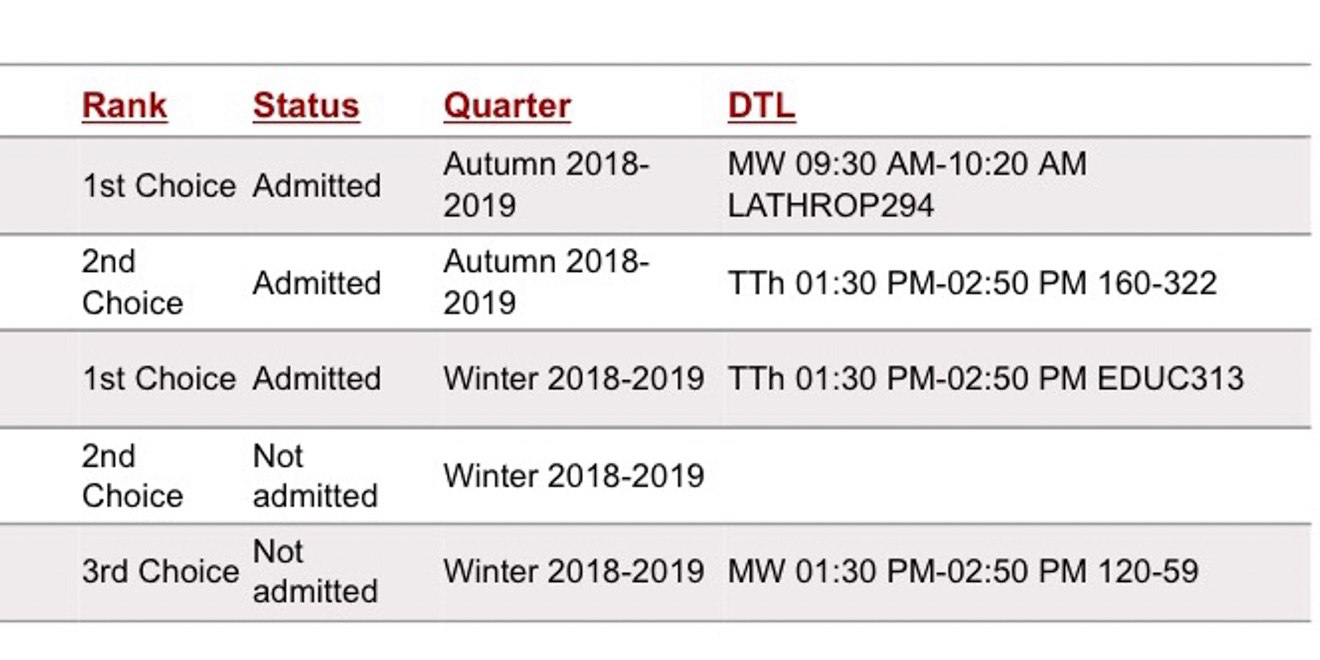Every year, hundreds of frosh and sophomores apply to Introductory Seminars, or IntroSems, which give students the opportunity to explore specific subjects in small-group settings while developing relationships with faculty members. But many students find the IntroSem application process highly competitive.
Electrical engineering professor Thomas Lee, who teaches the IntroSem EE 14N: Things About Stuff, said he gets close to 300 applicants for the course but only has 16 available spots.
Sophia Dew ‘22 applied for EE 14N without knowing much about the application process.
“I didn’t know Things About Stuff was competitive until after I was rejected, so I kind of assumed I was in the class and I made my whole schedule around being in the class,” Dew said. “Especially being at Stanford, you already have impostor syndrome coming in, and then getting the extra rejection ahead doesn’t really help. You think it’s personal, but it’s not really that personal at all.”
In part, the issue was one of simply not knowing the odds.
“I almost wish they had stats from last year saying, ‘Pretty much everyone can get into these [IntroSems], and then these ones have like a two percent, three percent acceptance,’” Dew said.
According to Associate Vice Provost Ellen Woods, who oversees Stanford Introductory Studies, IntroSem acceptance rates can vary unpredictably from year to year.
The decision not to show application numbers and acceptance rates is meant to encourage exploration among students without “moving them in one direction or another,” she added.
“The cost benefit has been analyzed, and there’s not a lot of upside to [knowing] that your chances are high or low,” Woods said. “What we’re really trying to get, especially in August before you start the year, is for students to self reflect. You don’t want to start your Stanford career being discouraged from trying something that you really want to do.”
Lee said that when he is deciding which students to accept for EE 14N, he looks for students’ interest in the course topics rather than general engineering experience.
“What I want to have in the class are a bunch of students with intense creativity and curiosity,” Lee said. “I don’t care what their particular background is, if they just have brains and a willingness to speak up and ask questions, that’s all I’m looking for.”
From each student’s application essay, Lee added, he aims to gain insight into the student’s personality and interests.
“Some of the students who may not be aware of the numerical odds didn’t exert much effort in their essay so I wasn’t able to understand who these people were,” he said. “I want to get to know them at some level… and if you write five words, there’s no data for me to operate on, so you’re going to be disadvantaged relative to the students who have written more and allowed me to find something about their personality.”
Given the high demand of EE 14N, Lee said he only accepts students who rank the course as their first-choice IntroSem.
“The number of students who want to get into all of these IntroSems is huge, so if you really want to get into that class but you ranked it number two, it’s not gonna happen,” Lee said.
For students who didn’t get into their first choice, Woods recommended reaching out to the professor of the class and asking what other courses they teach, if any, as well as for recommendations about similar courses taught by other professors.
For students who want the opportunity to learn in a smaller class environment, Woods suggested also looking into “Space Available” courses on the IntroSems website.
“The benefits [of IntroSems] are for all seminars, regardless of which subject they’re in, because the faculty who sign up to teach them are really interested in working with frosh,” Woods said. “It’s the experience of a small group [working] on a topic of mutual interest even if it’s not the major you want to do. It can help with exploring and it can help with satisfying the other requirements.”
To combat the selectivity of IntroSems, both Woods and Lee encouraged more faculty members to teach IntroSems — not only to give more students the opportunity to take an IntroSem but also to give more faculty the unique experience of working with underclassmen.
“It’s a very interesting exercise in pedagogy because teaching freshmen is very different from teaching Ph.D. students,” Lee said. “I think it’s healthy for faculty to interact with freshmen because they’re the next graduate students. Their brains are changing and their habits are changing. It’s just really interesting.”
Contact Alexandra Chau at alexchau ‘at’ stanford.edu.
